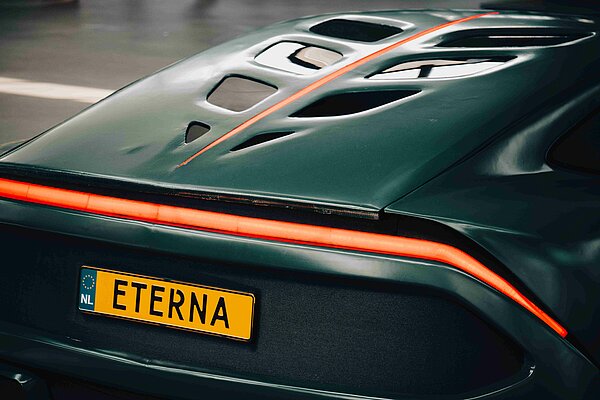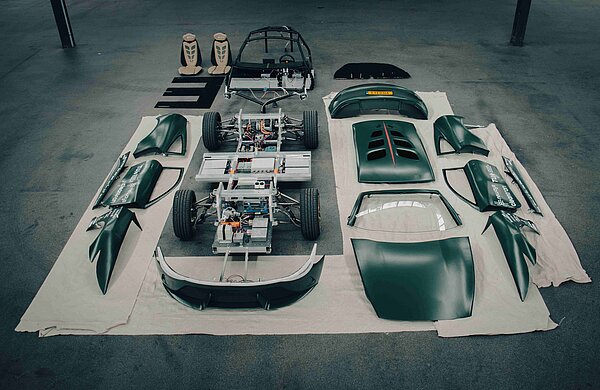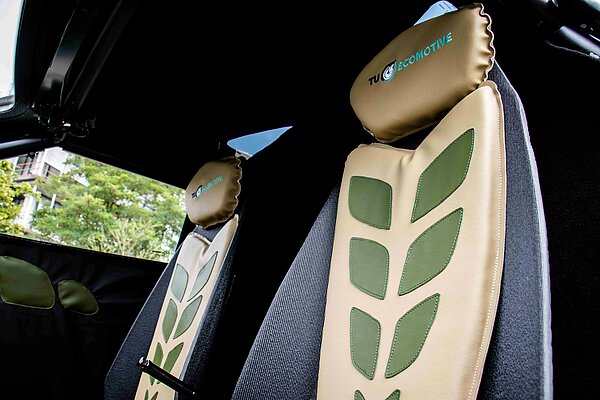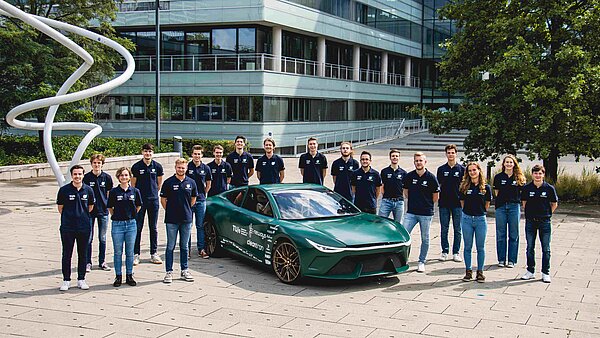CO2 neutrality in Europe by 2040 and globally by 2050....
Let's inspire and motivate each other to achieve these goals. TU/ecomotive is a student team consisting of a group of passionate and ambitious students who challenge to keep innovating as an extracurricular activity.

ETERNA
New car concept by TU Eindhoven students reduces total CO2 emissions during production process by a third.
Eterna consists of two separate parts with two different life cycles
In the Netherlands, a car is scrapped on average after just under 20 years, according to sector organization Auto Recycling Nederland. By looking differently at the construction of a car, TU/ecomotive student team from TU Eindhoven has found a way to extend the life of cars and ultimately reduce the total CO2 emissions during the production process by a third. How? By building the vehicle from two separate parts and approaching it as two separate life cycles. The result is the modular car Eterna, with which the students will tour Western Europe in mid-August.

Optimal lifespan
Most of the materials in a car are still (far) from being depreciated after 20 years, yet the average car is already heading toward scrapping by then. Therefore, the students designed Eterna so that certain parts can remain in the vehicle, instead of recycling them before the end of their life cycle. This makes use of their optimal lifespan.
As a result, significant cuts can be made in the overall production process. TU/ecomotive calculated in their sustainability report that Eterna saves 20 tons of CO2 in total production costs compared to the average car. This is roughly equivalent to what 800 trees annually extract CO2 from the atmosphere. In total, this represents a reduction in CO2 emissions during the manufacturing process of about one-third.
How it works. Eterna consists of a bottom for long-term use and a replaceable top. The bottom includes long-life components such as the ladder frame, batteries and motor. In addition, the replaceable top includes materials with a shorter lifespan, such as interior fabrics and safety features (e.g., digital side mirrors and cruise control).

Making people think differently
With this concept, TU/ecomotive wants to inspire the automotive industry and make it think differently about the development and use of cars.
"If we are no longer going to see cars as one entity, but as two separate life cycles, that is actually a system change," Plekkenpol summarizes the concept. "For the consumer, however, little will change. TU/ecomotive envisions a system where cars are managed centrally and the consumer can lease a vehicle. The leasing company ensures that the consumer has an 'up-to-date' vehicle; every 5 years small updates are made in the top end, every 20 years the entire top end is replaced, while the bottom end remains largely the same. In other words, a subscription model."
"The earth does not provide unlimited resources, so more efficient use of materials is the solution."
Stijn Plekkenpol, TU/ecomotive team manager.
Europe tour
Starting in mid-August, the team will showcase their concept in several countries, including Germany, Belgium and Italy. They will interact with the auto industry, visit universities and attend numerous events. The starting point is NEMO, the science museum in Amsterdam, where the car will be on public display. They will also visit Ford and Ferrari, among others, and the IAA Mobility Exhibition in Munich, one of the largest mobility events in the world.
Follow the adventure here: read all the latest updates from the TU/ecomotive team here!
